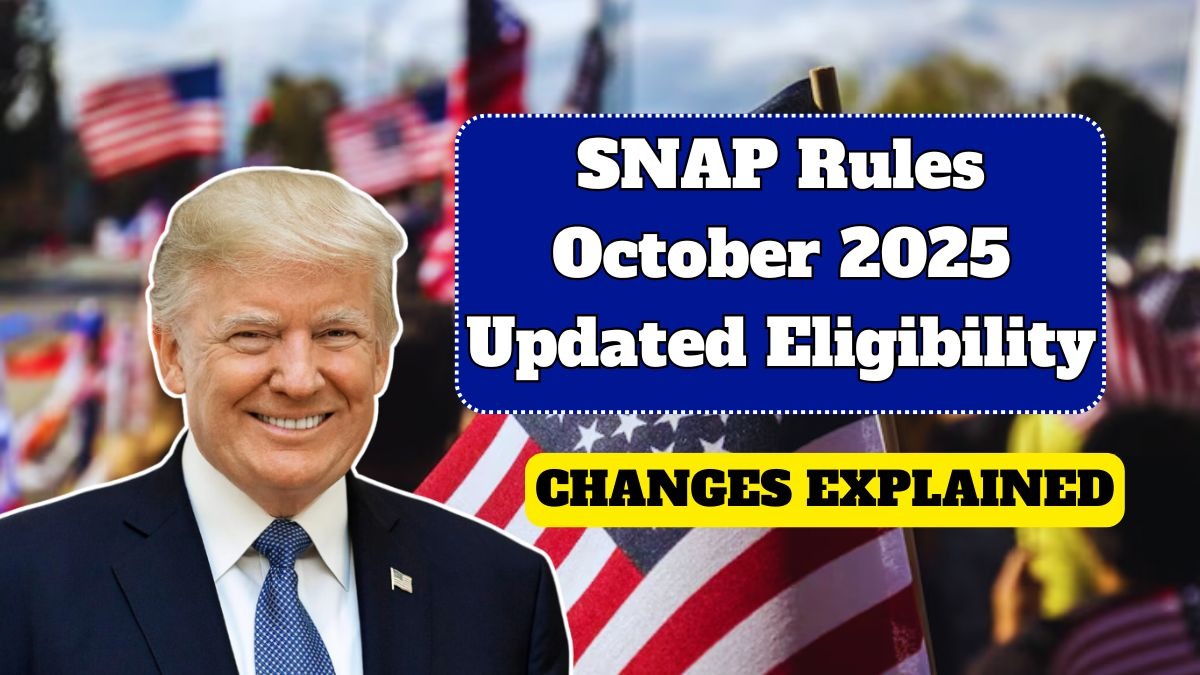Join on WhatsApp
Get the latest updates directly on WhatsApp – motivation, news & more!
The Supplemental Nutrition Assistance Program (SNAP) remains one of the most critical safety nets for millions of low- and moderate-income Americans. With inflation raising grocery prices nationwide, the U.S. Department of Agriculture (USDA) has introduced several new rules and eligibility updates in October 2025 to ensure benefits are distributed more efficiently and fairly. These adjustments are intended to help families maintain access to nutritious food while improving the accuracy of benefit distribution and eligibility verification across states.
Understanding the Importance of SNAP
SNAP is designed to help struggling households afford essential groceries through federal financial assistance distributed monthly via Electronic Benefit Transfer (EBT) cards. These funds can be used to buy food items at authorized grocery stores, supermarkets, and farmers’ markets across the United States.
As the cost of living continues to rise sharply, SNAP has become more vital than ever. The USDA reports that over 41 million Americans rely on the program each month to afford healthy meals. Many of these recipients are families with children, elderly citizens, or people with disabilities who depend on consistent government support to combat food insecurity.
The October 2025 policy update brings significant adjustments to income thresholds, payment schedules, and documentation requirements—strengthening the program’s integrity and aligning support with current economic conditions.
October 2025 SNAP Benefit Overview
| Field | Information |
|---|---|
| Provider | U.S. Department of Agriculture (USDA) |
| Purpose | Food assistance for low-income households |
| Beneficiaries | U.S. citizens, permanent residents, or eligible non-citizens |
| Benefit Frequency | Monthly |
| Distribution Mode | EBT Card |
| Program Type | Federal Assistance Program |
| Current Adjustments | Higher income limits, updated payment schedules, stricter eligibility verification |
| Official Website | usda.gov |
These reforms aim to align payments with household needs while preventing fraud and ensuring that deserving citizens receive timely support.
New SNAP Income Limits and Eligibility Rules
The USDA income limits for the October 2025 cycle have been adjusted to reflect inflation and regional cost-of-living differences. Households now must have gross monthly earnings at or below 130% of the Federal Poverty Level (FPL), with some deductions and exemptions available for specific expenses.
Key eligibility conditions include:
- Gross monthly income limit of $1,580 for single-person households.
- Gross monthly income limit of $2,137 for two-person households.
- Additional increments for larger families calculated using the USDA regional adjustment formula.
- Asset limits remain at $2,750, rising to $4,250 for families that include a senior (60+) or a disabled member.
- Applicants must be U.S. citizens or eligible non-citizens, with proof of residency within the state of application.
- Deductible expenses such as housing, childcare, and medical costs for elderly or disabled individuals are also considered when calculating final benefits.
How Payments Are Determined
SNAP benefits are calculated using this formula:
Final Benefit = Maximum Allotment – (30% of Net Household Income)
Households with little or no income typically receive the maximum benefit, while families with higher earnings receive proportionately less. This ensures fairness while still encouraging employment and personal contribution to living costs.
For October 2025, USDA benchmarks indicate an increase in maximum monthly allotments, reflecting updated cost-of-living metrics. The average benefit for families remains strong, ensuring essential access to nutritious foods despite rising costs.
Updated Payment Schedules by State
While SNAP is federally funded, each state manages its own distribution system. To prevent delays and balance system demand, payment schedules vary, often based on beneficiaries’ case numbers, initials, or Social Security digits.
Most states now follow one of two updated models:
- Staggered Payments: Benefits distributed over multiple days each month to prevent overload.
- Regional Synchronization: Coordinated disbursements by geographic zones to ensure efficient support distribution.
Beneficiaries are encouraged to check their state’s Department of Human Services or local SNAP portal to confirm their precise payment dates and avoid missed deposits.
Major Changes Introduced in October 2025
1. Adjusted Income Limits:
Cost-of-living increases have led to a rise in gross and net income thresholds. The single-person limit now stands at $1,580, while multi-person households have proportionally higher limits based on size and region.
2. Stricter Eligibility Verification:
New documentation requirements are in effect. Applicants must now provide updated income proof, address confirmation, and verification of household composition to ensure compliance. States are adopting automated database checks to prevent duplication or fraudulent claims.
3. Simplified Application Process:
The USDA has streamlined online applications through the Benefits.gov portal. Families can now submit documents, upload verification proof, and update household changes digitally, minimizing physical paperwork delays.
4. State-Level Payment Flexibility:
To reduce strain on federal processing systems, states can now stagger payments more flexibly, improving accessibility and managing account loads more efficiently.
Maximum Benefit Amounts for October 2025
While payment amounts vary based on region, income, and household size, the USDA has confirmed modest increases for all benefit categories.
| Household Size | Maximum Monthly Benefit (approx.) |
|---|---|
| 1 Person | $291 |
| 2 Persons | $535 |
| 3 Persons | $766 |
| 4 Persons | $973 |
| 5 Persons | $1,155 |
| 6 Persons | $1,386 |
These figures represent national averages, with higher benefits in Alaska, Hawaii, and U.S. territories where living costs are elevated.
Key Reminders for SNAP Recipients
- Update Personal Information: Ensure your address, household count, and income details are current to maintain continuous eligibility.
- Check Deposit Dates: Payment timing varies by state. Tracking EBT deposits through local portals prevents confusion.
- Report Changes Promptly: Changes in income or living arrangements must be reported within ten days to avoid overpayment penalties.
- Avoid Benefit Fraud: Submitting incorrect information may delay or terminate assistance. Use only official USDA and state portals for communication.
How to Track or Check SNAP Payment Status
SNAP beneficiaries can monitor their case or payment status through multiple secure channels:
- Online Portals: Each state’s SNAP website allows users to log in, view payment schedules, and check balances.
- Mobile Applications: Many states now offer free mobile EBT apps for convenient access to payment history.
- EBT Customer Service Hotline: The number printed on the back of EBT cards provides instant balance updates and assistance.
Final Outlook for 2025
The October 2025 SNAP revisions mark an important modernization phase for one of America’s most impactful public aid programs. With higher income thresholds, stronger verification systems, and expanded online accessibility, the USDA continues to refine SNAP’s ability to address hunger and food insecurity in every state.
For beneficiaries, these new rules ensure continued access to healthy food while safeguarding resources for those most in need. Staying informed of state-specific guidelines and maintaining updated application records will help every SNAP recipient make the most of their benefits and keep their families nourished.




